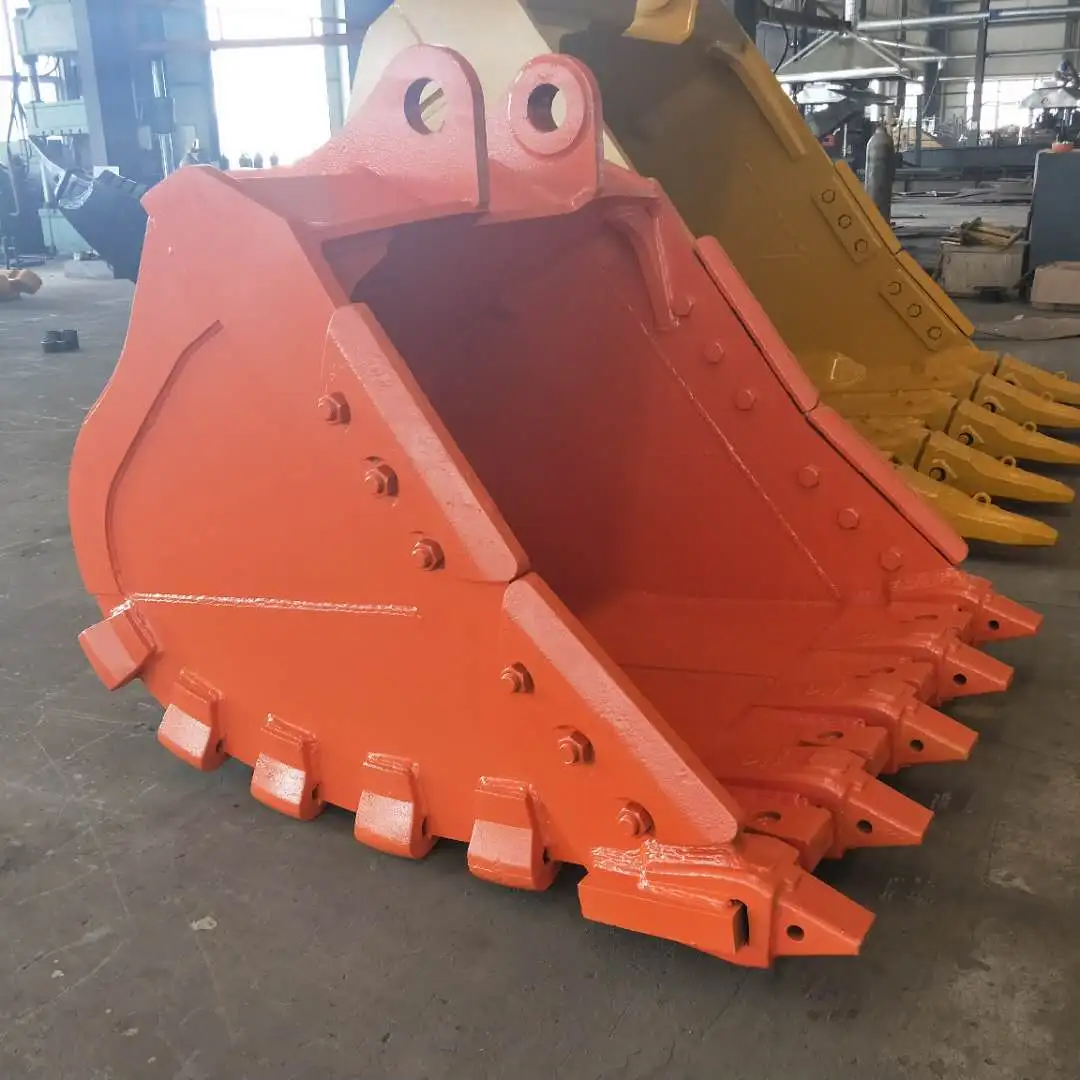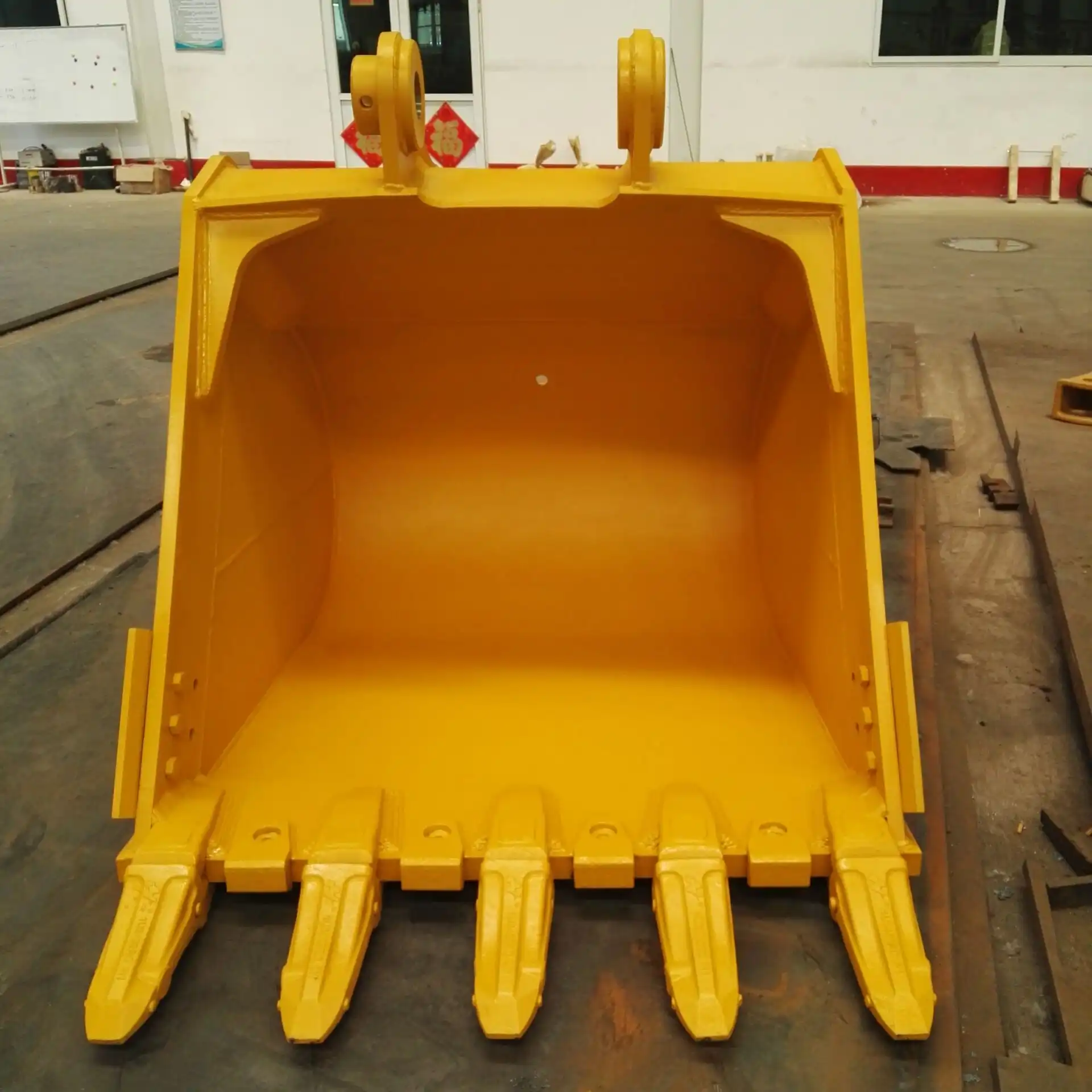What is the bucket called on an excavator?
The bucket on an excavator is simply called an "excavator bucket" or "digging bucket," though the terminology can vary depending on its specific function and design. These essential excavator bucket attachments serve as the primary working tool for earth-moving operations, and their names often reflect their specialized purposes. Whether you're in construction, mining, railway maintenance, or demolition, understanding the correct terminology helps ensure you get the right equipment for your specific needs.
While "excavator bucket" remains the most common term, you'll encounter various names like digging bucket, rock bucket, trenching bucket, or specialty attachments depending on the application. The naming convention typically combines the equipment type (excavator) with either the primary function (digging) or the specific material it's designed to handle (rock, soil, debris). This straightforward nomenclature makes it easier for purchasing managers and engineers to communicate exact requirements when sourcing equipment for their operations.

Digging Bucket
The digging bucket represents the most fundamental and widely recognized type of excavator attachment. This curved, scoop-shaped implement attaches to the excavator's arm through either a pin-on connection or quick coupler system, enabling operators to penetrate soil, scoop materials, and perform basic excavation tasks. The design philosophy behind digging buckets centers on maximizing material flow while maintaining structural integrity under demanding conditions.
Design and Engineering Principles
Digging buckets feature a curved profile that facilitates smooth material flow from the cutting edge to the back of the bucket. This curvature, combined with strategically placed cutting teeth, allows efficient penetration into various soil types. The bucket's geometry considers factors like breakout force, material retention, and dump angle to optimize performance across different applications. Engineers design these attachments with reinforced stress points, particularly around the cutting edge and connection points, where forces concentrate during operation.
The construction typically involves high-strength, wear-resistant steel that can withstand repeated impacts and abrasive conditions. Manufacturers like Tiannuo Machinery utilize advanced welding techniques and quality control processes to ensure each bucket meets rigorous durability standards. The cutting edge often features replaceable wear parts, including cutting teeth and side cutters, which extend the bucket's service life and maintain cutting efficiency throughout its operational period.
Operational Capabilities and Applications
Standard digging buckets excel in general excavation tasks involving loose to medium-density soils. Their versatility makes them suitable for trenching, foundation excavation, material loading, and basic grading operations. The bucket's capacity, typically ranging from 0.1 to 5.0 cubic meters, determines its suitability for different excavator sizes and project requirements. Smaller buckets provide precision for detailed work, while larger capacities maximize productivity in bulk excavation projects.
These attachments perform effectively in construction site preparation, utility installation, landscaping projects, and general earth-moving operations. The digging bucket's design allows operators to maintain good visibility and control during operation, contributing to both productivity and safety. Its balanced weight distribution ensures stable operation without compromising the excavator's overall stability or performance characteristics.
Maintenance and Longevity Considerations
Proper maintenance of digging buckets significantly impacts their operational lifespan and performance consistency. Regular inspection of cutting edges, teeth, and structural components helps identify wear patterns before they affect productivity. The bucket's design incorporates serviceable wear points that allow maintenance teams to replace consumable components without extensive downtime. This approach reduces total cost of ownership while maintaining optimal performance throughout the bucket's service life.
Quality buckets feature reinforced edges and wear plates that protect critical areas from excessive wear. The strategic placement of these protective elements extends service intervals and maintains cutting efficiency. Understanding maintenance requirements helps purchasing managers make informed decisions about equipment specifications and long-term operational costs.

Functional Subdivision Name
The terminology for excavator bucket attachments becomes more specific when describing specialized variants designed for particular applications. Each functional subdivision carries distinct naming conventions that reflect the bucket's intended use, material handling capabilities, and operational environment. Understanding these specialized names helps equipment buyers specify exactly what they need for their unique operational requirements.
Rock and Heavy-Duty Variants
Rock buckets represent a specialized category designed for handling hard materials, broken rock, and challenging excavation conditions. These attachments feature reinforced construction, specialized cutting tooth configurations, and enhanced structural integrity to withstand the demands of hard rock excavation. The naming typically includes descriptors like "rock bucket," "heavy-duty bucket," or "quarry bucket," immediately communicating their intended application to buyers and operators.
Heavy-duty variants often incorporate additional reinforcement plates, upgraded steel specifications, and specialized cutting systems optimized for abrasive conditions. The bucket profile may feature a more aggressive cutting angle and reinforced side plates to handle the lateral forces encountered when working with rocky materials. These design modifications result in attachments capable of extended service in demanding mining, quarrying, and demolition applications.
Trenching and Precision Applications
Trenching buckets earn their name from their narrow profile and extended reach capabilities, making them ideal for utility installation, drainage work, and precision excavation tasks. These attachments typically measure significantly narrower than standard digging buckets, allowing operators to create clean, narrow trenches with minimal soil disturbance. The naming convention clearly indicates their specialized application, helping buyers understand their suitability for specific project requirements.
Precision applications often require specialized bucket designs that prioritize accuracy over bulk material handling. Cleanup buckets, finishing buckets, and grading buckets fall into this category, each designed for specific finishing operations. These attachments feature refined cutting edges, optimized profiles for material control, and enhanced operator visibility to support precise work requirements.
Specialty and Industry-Specific Designs
Industry-specific applications have generated numerous specialized bucket designs with equally specific naming conventions. Railway maintenance operations utilize dustpan buckets designed for ballast handling and track bed preparation. These attachments feature specialized profiles optimized for working around railway infrastructure while maintaining the precision required for track maintenance operations.
Screening buckets, also known as riddle buckets or sifting buckets, incorporate integrated screening mechanisms that separate materials during the excavation process. These sophisticated attachments combine excavation and sorting functions, improving productivity in applications requiring material separation. The naming clearly indicates their dual functionality, helping buyers understand the operational advantages these specialized tools provide.

Industry Standards and Regional Differences in Names
The terminology for excavator attachments varies significantly across different regions, industries, and manufacturing standards. These variations can create confusion during international procurement processes, making it essential for purchasing managers to understand regional naming conventions and industry-specific terminology. Standardization efforts continue to evolve, but regional preferences and established industry practices maintain distinct naming patterns.
Geographic and Cultural Variations
North American markets typically use straightforward, function-based naming conventions that emphasize the bucket's primary application. Terms like "digging bucket," "rock bucket," and "cleanup bucket" directly communicate the attachment's intended use. European markets often incorporate more technical specifications into their naming conventions, reflecting the region's emphasis on precision engineering and detailed technical documentation.
Asian markets, particularly in regions with significant manufacturing presence, may use naming conventions that reflect both functional and dimensional characteristics. These naming patterns often include capacity specifications, dimensional parameters, and compatibility information within the product designation. Understanding these regional preferences helps international buyers communicate effectively with suppliers and ensure accurate product specifications.
Industry-Specific Terminology
Different industries have developed specialized terminology that reflects their unique operational requirements and safety considerations. The construction industry typically uses general-purpose naming conventions that emphasize versatility and broad application ranges. Mining operations often incorporate material-specific descriptors that indicate the bucket's suitability for particular ore types or geological conditions.
Railway maintenance and infrastructure industries use highly specialized terminology that reflects the unique requirements of working around active transportation systems. Terms like "ballast bucket," "rail maintenance bucket," and "track cleaning bucket" immediately communicate both the application and the specialized design features required for safe railway operations. These industry-specific terms help ensure that equipment meets both functional and safety requirements for specialized applications.
Manufacturing and Quality Standards
Manufacturing standards influence naming conventions by establishing criteria for performance, durability, and safety characteristics. International standards organizations work to harmonize terminology across regions, but established industry practices and local regulations continue to influence naming patterns. Quality certifications and performance standards often become integrated into product names, helping buyers understand the level of engineering and testing behind each attachment.
Professional purchasing managers benefit from understanding how quality standards influence naming conventions, as this knowledge helps identify products that meet specific performance requirements. Excavator bucket attachments that comply with international standards often carry designation codes that indicate their testing history and performance capabilities, providing valuable information for procurement decisions.
FAQ
①What is the most common name for an excavator bucket?
The most common name is simply "excavator bucket" or "digging bucket." These terms are universally understood across different industries and regions.
②Do different industries use different names for excavator buckets?
Yes, industries often use specialized terminology. For example, railway maintenance uses "dustpan buckets," while mining might specify "rock buckets" or "quarry buckets" based on application requirements.
③What's the difference between a bucket and other excavator bucket attachments?
While "bucket" refers to the standard digging attachment, other specialized attachments like grapples, rippers, or screening buckets have specific names that reflect their unique functions and design features.
④How do regional differences affect bucket naming?
Regional preferences vary significantly. North American markets use function-based names, European markets emphasize technical specifications, and Asian markets often include dimensional and compatibility information in product names.
⑤What should I specify when ordering excavator buckets?
Specify the bucket type, capacity, excavator compatibility, attachment method (pin-on or quick coupler), and any special features like reinforced edges or specialized cutting systems for your application.
Understanding the proper terminology for excavator buckets and their specialized variants ensures successful equipment procurement and clear communication with suppliers. Whether you need standard digging capabilities or specialized functionality for railway maintenance, mining, or construction applications, knowing the correct names and specifications streamlines the purchasing process and ensures you receive equipment that meets your operational requirements.
For comprehensive information about our complete range of excavator bucket attachments, including specialized designs for railway maintenance, screening applications, and heavy-duty operations, contact our technical team at raymiao@stnd-machinery.com. TianNuo Machinery's experts can help you select the optimal bucket configuration for your specific application requirements and ensure compatibility with your existing equipment fleet.
References
- Construction Equipment and Attachments: A Technical Guide to Excavator Bucket Design and Applications, Engineering Machinery International, 2023
- Heavy Equipment Terminology and Industry Standards: Global Perspectives on Construction Machinery Nomenclature, International Construction Equipment Association, 2024
- Excavator Attachment Design Principles: Materials, Manufacturing, and Performance Optimization, Advanced Manufacturing Quarterly, 2023
- Railway Maintenance Equipment Standards: Specialized Attachments for Infrastructure Operations, Railway Engineering Review, 2024
- Regional Variations in Construction Equipment Terminology: A Comparative Analysis of Global Market Practices, Industrial Equipment Research Institute, 2023
About Author: Arm
Arm is a leading expert in the field of specialized construction and railway maintenance equipment, working at Tiannuo Company. Tiannuo specializes in manufacturing a wide range of products, including railway maintenance equipment like railway sleeper changing machines and screening machines, excavator modification equipment such as excavator lifting cabs, various engineering arms for excavators, excavator accessories like digging buckets, and engineering vehicle auxiliary equipment like loader buckets.

